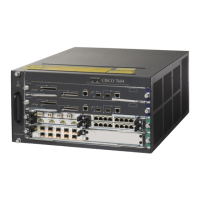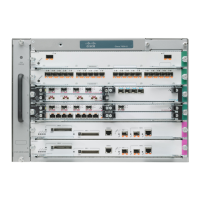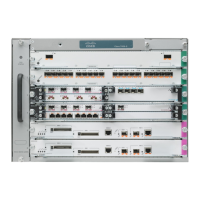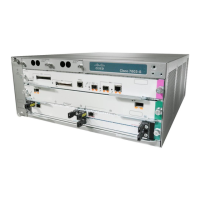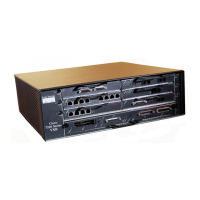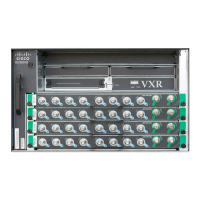15-14
Cisco 7600 Series Router Cisco IOS Software Configuration Guide—12.1E
78-14064-04
Chapter 15 Configuring STP and IEEE 802.1s MST
Understanding How IEEE 802.1s MST Works
• Backup—A backup for the path provided by a designated port toward the leaves of the spanning tree.
Backup ports can exist only where two ports are connected together in a loopback by a point-to-point
link or bridge with two or more connections to a shared LAN segment.
• Disabled—A port that has no role within the operation of spanning tree.
Port roles are assigned as follows:
• A root port or designated port role includes the port in the active topology.
• An alternate port or backup port role excludes the port from the active topology.
RSTP Port States
The port state controls the forwarding and learning processes and provides the values of discarding,
learning, and forwarding. Table 15-4 provides a comparison between STP port states and RSTP port
states.
In a stable topology, RSTP ensures that every root port and designated port transition to forwarding, and
ensures that all alternate ports and backup ports are always in the discarding state.
Rapid-PVST
Rapid-PVST uses the existing configuration for PVST+; however, Rapid-PVST uses RSTP to provide
faster convergence. Independent VLANs run their own RSTP instance.
Dynamic entries are flushed immediately on a per-port basis upon receiving a topology change.
UplinkFast and BackboneFast configurations are ignored in Rapid-PVST mode; both features are
included in RSTP.
Understanding How IEEE 802.1s MST Works
Note In Cisco IOS release 12.1(11)EX and later releases, RSTP is implemented as part of Multiple Spanning
Tree Protocol (MSTP). In Cisco IOS release 12.1(13)E and later releases, RSTP is also available as a
standalone protocol in Rapid-Per-VLAN-Spanning Tree (Rapid-PVST) mode. In this mode, the switch
runs an RSTP instance on each VLAN, which follows the usual PVST+ approach.
Table 15-4 Comparison Between STP and RSTP Port States
Operational Status STP Port State RSTP Port State Port Included in Active Topology
Enabled Blocking
1
1. IEEE 802.1D port state designation.
Discarding
2
2. IEEE 802.1w port state designation. Discarding is the same as blocking in RSTP and MST.
No
Enabled Listening Discarding No
Enabled Learning Learning Yes
Enabled Forwarding Forwarding Yes
Disabled Disabled Discarding No

